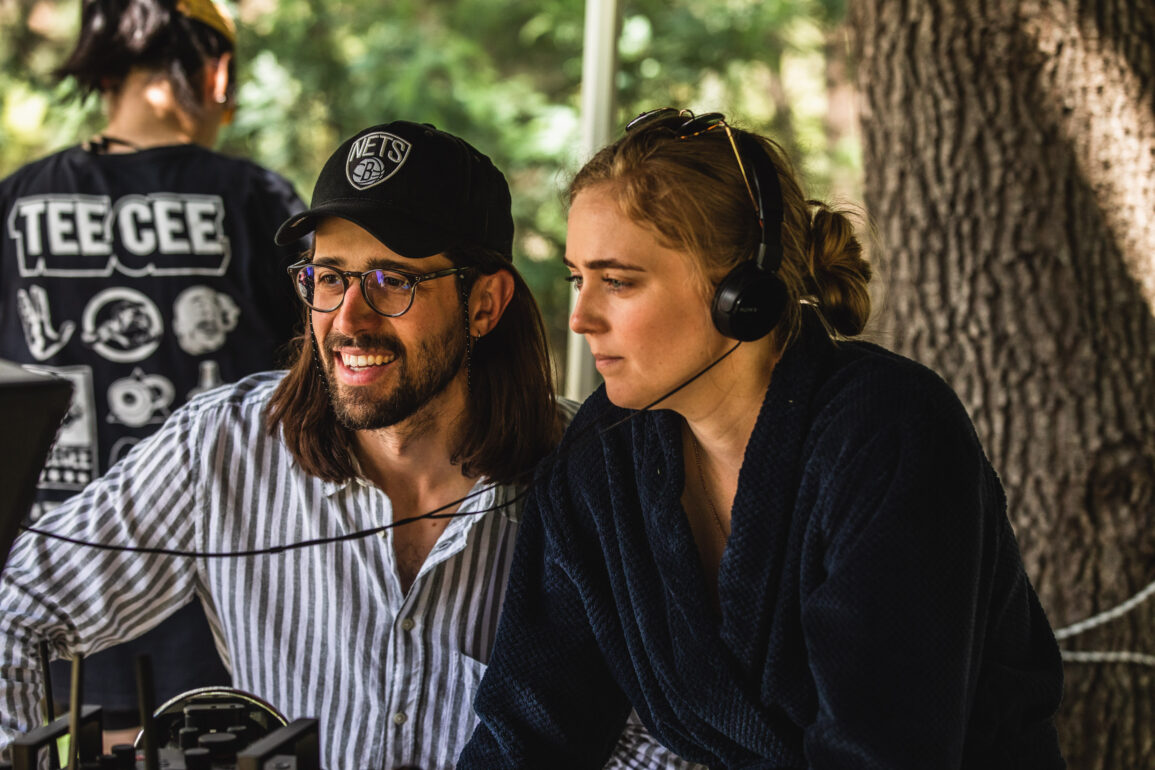It’s every filmmakers dream to have their film screened at the prestigious South By South West film festival in Austin, Texas, and that honour is doubled when your film is a horror film and gets a late night session for the gorehounds to attend late at night. This was the case for Hannah Barlow and Kane Senes whose new horror film Sissy launched at the festival in March. Receiving a heap of praise at the fest, it’s now Australia’s turn for a little bit of Sissy action as the influencer-focused horror-comedy makes it blood-soaked splash at the Sydney Film Festival, and takes the grand honour of opening Perth’s own Revelation Film Festival for its 25th anniversary programme.
Sissy tells the story of Cecilia (Aisha Dee), a wellness guru who has amassed a massive following online giving support and advice to strangers in the world. A chance encounter with her childhood friend Emma (Hannah Barlow) sees Cecilia being invited on a bachelorette weekend away with Emma’s friends as they celebrate her oncoming wedding. Little does Cecilia know, her childhood bully Alex (Emily De Margheriti), is also along for the ride. Things quickly get complicated, and it’s not long before chaos ensues.
In this interview, co-directors and co-writers (and co-lead) Hannah Barlow and Kane Senes talk about their entry into filmmaking, the complicated line between horror and comedy in Sissy, and about crafting the many glorious and grotesque practical effects that can be found in Sissy.
Readers should note, while this interview does avoid explicit spoilers, there are some discussions about the types of kills featured in the film. If you’re the kind of viewer who enjoys a good slasher-esque film, and would rather not knowing how some of the victims meet their fate, then make to watch Sissy first and then return to read this deep dive interview.
Sissy launches at Perth’s Revelation Film Festival on July 7th, and will have a national cinema release on October 27th. Make sure to pencil this one in your calendar!
Let’s start [with] the script writing process. You work together in your script writing and in directing as well. Where do you start?
Hannah Barlow: We watch a bunch of reference films after we determine what story we want to tell. ‘This is what we have to say about the world. These are the characters that are brewing. This is the story that’s brewing.’ And then we basically start debating what kind of film we want to make until we arrive at the same point. And that process doesn’t take very long because we have a lot of the same ideas and passions and sensibilities. It feels like jamming in a garage, like being a bit of a two man band, just trying to see figure it out?
Kane Senes: With Sissy, we said “We know we want to make a horror film that plays on the cabin in the woods thing, and that probably is a satire.” We know we want it to be funny, and we know we want it to feel like those movies that we love.
It’s coming from almost the macro down to the micro, and then getting more specific. If this is the genre space, if this is the world, then who is our main character? What are the themes? Themes will sometimes start first. It usually goes bigger to small, in many ways, as opposed to like “Oh, I saw this person sitting in a cafe and I wrote a script about what I thought that person was doing that day.”
So it starts in an ambiguous vague visual sense. It usually starts from a place of the film-buffery of it all. And then we realise, ‘Okay, at some point, we have to put words on a page here and stop just watching films and talking about cool ideas.’ (laughs)
HB: And then we do the general Blake Snyder method. You put the cards up on the wall and change them around and then the vomit draft and tweaking from there for however many months. (laughs)
KS: So we’re still in that big picture phase [for the next film]. But we’re getting to the point where after a couple weeks of this or a few weeks of going “Okay, well, if it starts with this kind of this character in this setting, what happens next?”, and we start to string together a bunch of scenes and do that until we get to the end of knowing what the story is. If that makes sense. And then the next stage micro again, break those scenes down. Write those scenes down. So it kind of whittles itself down.
What are the films you’re using as a reference point for this film?
HB: Carrie is a huge reference. Kane took me through a lot of the 70s, 80s, 90s slashers that we all know like Friday the 13th, Halloween, Scream, the giallo.
KS: I felt like I was showing Hannah a lot of genre material and a lot of slashers and Hannah was showing me things that I might have seen but are not my reference, comedies like Bridesmaids or Mean Girls. And Carrie was one of those weird ones, like you said, almost where we met in the middle where it’s kind of like the mean girl high school film kind of meets a horror film.
HB: But definitely the North Star for Sissy is Muriel’s Wedding. If Muriel started seeking revenge on the high school bullies at the midpoint, we wouldn’t be able to make Sissy because it would have already been made.
KS: It really was. I think Muriel’s Wedding is great because I don’t feel like the rest of the world really knows that film as much as Australians, like we grew up with it on TV every week.
HB: I feel like we couldn’t escape that movie growing up, it was playing like every Friday night and you’d get sick of it. And then we return to it in the writing of Sissy and we’re like “Wow, this is actually one of the most horrifying films I’ve ever seen.” It’s really dark. But it’s pitched as this broad comedy.
How did you straddle that line of creating that darkness in the comedy here that works so well?
HB: I think that was the main challenge of making Sissy. We were working towards that the entire process. I’m glad to hear that you think that we’ve pulled it off. (laughs)
KS: It definitely started saying, “Let’s make a horror film.” And from that going, “Well, what scares us?” and talking about social media and the notion of the influencer as someone influencing a lot of young minds especially, but who put them there? What qualifies them to be in that position? It’s like this power that’s been thrust in our hands, which is our phones and then obviously social media and then the internet. Anyone can make themselves into anything with just a phone in their hands if they really want and that’s a loaded weapon. So it kind of started from there, the horror of it all.
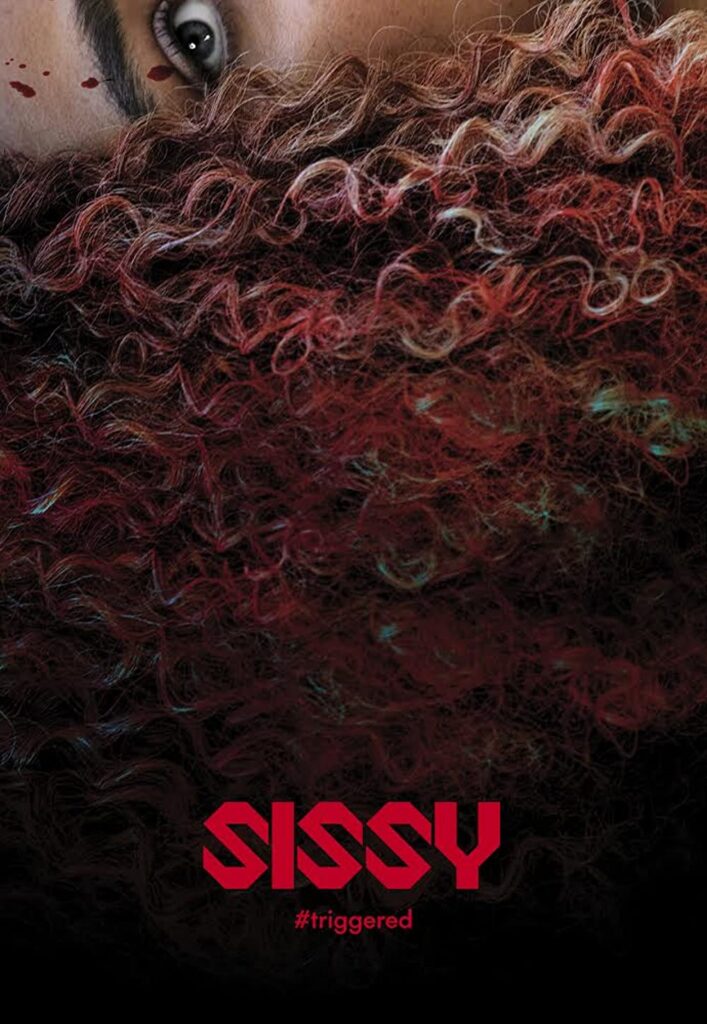
And then very soon, it went into Muriel’s Wedding, it went into Bridesmaids, it went into Mean Girls. As soon as we realised that it was about someone who was bullied when they were younger and is carrying that hurt, that trauma around with them and hasn’t really addressed it and then it comes out on this weekend when she’s faced with the trigger, once we knew we had that kind of setting for her– okay, right, so it’s an underdog story about a kind of girl who is being harassed by bullies, essentially, both in the past and also present day.
HB: Because she’s trying to reclaim her power. That’s the trajectory of her character.
We also took real life inspiration from the inherent sort of ironic comedy of real-life con artist Belle Gibson, who is an Australian icon. She’s taking advantage of one of the most vulnerable communities in Australia, cancer [patients], and profiting from them, and getting exposed and denying it. It’s tragic, but it’s also inherently funny.
KS: It’s so crazy it’s funny in an ‘I can’t believe it’ way. And we’re seeing more and more of these kinds of individuals in the news all around every day. The world feels like it’s getting more and more insane because everyone has a mouthpiece.
HB: And so anybody can slip through the cracks and proselytise whatever they want without having a professional degree or anything. And people that shouldn’t [do] follow them, and that’s really dangerous. But it’s also really, really funny.
How did you both start your journey into filmmaking? Was it through school? Was it through independent filmmaking?
KS: I started in a pretty classic way. I didn’t start that early. It wasn’t growing up with the 8mm [camera] in my hand or whatever. I always loved the arts, I was always into painting, I was always into writing creatively, I was always into acting. And it wasn’t until uni that I saw that, “Oh, well, yeah, you actually can put all these things together in the format of film.”
I was always a film-buff, my parents could never pull me out of the video store fast enough. But I never really thought of it as something you could do. And so when I discovered film studies at UNSW, I quickly fell in love with it and decided I really need to go to film school. I was fortunate enough to go straight to LA and go to a film school there. Shout out New York Film Academy in Universal City. And that’s when it really all exploded for me. That’s when I was like, “Wow, there’s this whole world there.” All these classmates were making short films together, and you’re driving past the studios every day, watching movies all the time, sharing things, voraciously taking it all in. It’s been a never-ending film class ever since.
HB: I came into the filmmaking arena as an actor. I went to NIDA and did the three years BFA course as an actor and then moved over to LA, and that’s where I met Kane. But you know, growing up, I never even gave myself permission to think I could be a writer and director because in the 90s and the 2000s, early 2000s, it was really a man’s arena. So it just never occurred to me that that’s something I could strive for, but acting was.
[I] got to LA and did the whole struggling actor thing, booking some jobs, waiting around. Kane and I, we fell in love and then we sort of started to go “Okay, we could make things together instead of waiting for the industry to push us along.” So in the vein of Mark Duplass and all those other mumblecore filmmakers like Joe Swanberg and Lynn Shelton, that kind of class of mumblecore filmmakers who made things for like nothing on micro budgets, we decided to make For Now, which is a road trip mumblecore dramedy about me and my brother.
Because my brother is a professional ballet dancer and so the film’s premise is we drive to San Francisco to audition for the San Francisco Ballet Company, because I want him to live in America with me as an actor. And so it was all like blurring between fiction and reality. We shot it in seven days, we improvised the whole thing on a treatment which was all possible because of twenty-five grand we raised on Kickstarter.
It was really like grassroots guerilla style filmmaking, we had no permits, etc, etc. Because of that experience, Kane and I realised that we liked working together and so we moved back to Australia to take advantage of the government incentives here. We wrote Sissy and now we’re here and I’ve fallen in love with writing and directing. I have this sort of new identity which is really cool. I’m still learning so much.
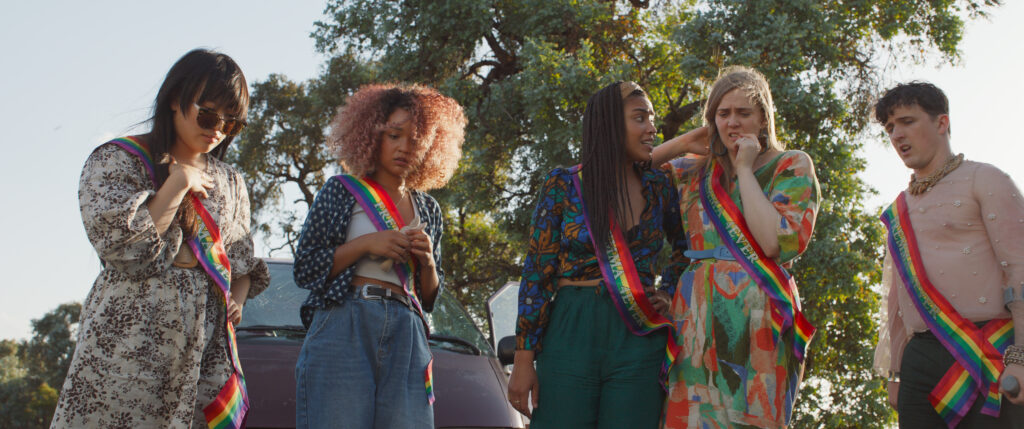
Hannah, I love the fact that you’re wearing multiple hats in this film: you’re acting as co-lead, you’re writing, you’re directing. How did you manage to balance all of those roles at once?
HB: I’m very lucky that I’m in a co-directing partnership with Kane, and that we can lean on Kane’s talent and tenacity and his skillset that he really forged at NYFA. I’m still growing into that aspect of directing. I was fortunate enough to be in the trenches with the actors with costume and makeup, and I got to start every day with those departments, and Kane would kind of wrangle the crew and be with the camera. Because I was acting 80% of the time, we had to trust each other. And I think it worked out.
KS: It was kind of fly by the seat of our pants, figuring it out as we went because we had done For Now together. But that was just four people in a car driving along and stopping off and getting the camera out and shooting something. This was actually a film crew, a location shoot where we had to zip around all with just outside cameras. It was a tight schedule, and we were trying to pull off a lot of practical effects and all kinds of things. I don’t think we realised what we had signed up for but that’s filmmaking. You figure it out as you go. And I don’t think it ever gets easy.
HB: No. The jamming in the garage gets harder and there’s more band members.
KS: Like Hannah was saying, she would start the day with one department, I’d start today with another department, and that’s how we prepped the film in essentially ten days. We basically had two directors working kind of double shifts.
HB: The directing isn’t just production. Kane and I get to do our beautiful little writing bubble for a long time and then–
KS: It really starts with the writing. I feel like our ability to direct starts with the writing because we know it so well.
HB: Yeah, we’re talking about how we’re going to direct a shot as we’re putting it on the page, which is really fun. And then again, we get to jam with our editor Margi Hoy for a couple of months. That’s its own beautiful little process where the three of us are trying to turn what we’ve got in the can into this other thing. That’s actually my favourite part of the whole process, creating something new from those pieces.
So it was a ten day shoot, is that right? Or ten days set up?
KS: Yes, it was. We had a bit of development time which might have been say, us producers, maybe a couple of weeks with a cinematographer. But it was only about eleven days of paid pre-production. So we’ve moved to Canberra, we set up shop, we’re looking for our locations, we’re welcoming actors here and there, we’re doing rehearsals, storyboarding, essentially all of that stuff in really a two week period.
That’s why it was very kind of lightning fast. We were very lucky that the people we made the film with were really experienced, like more experienced than we were, so we really leant on a lot of that experience. Like Steve Arnold who shot the film, he’s shot like thirty Australian features from Last Cab to Darwin–
HB: Rams.
KS: –back to some of the great Aussie films from the 80s and 90s even. The fact that Larry Van Duynhoven did all of our practical effects, makeup and prosthetics and all that stuff.
HB: And Renate Henschke who is the costume designer – I would go into the room and she’d be like, “What do you think about this?” She was such a genius at what she does. It was like, “Yeah, that’s it. You got the character.” We didn’t have to stretch ourselves too much because these people were just giving us that talent.
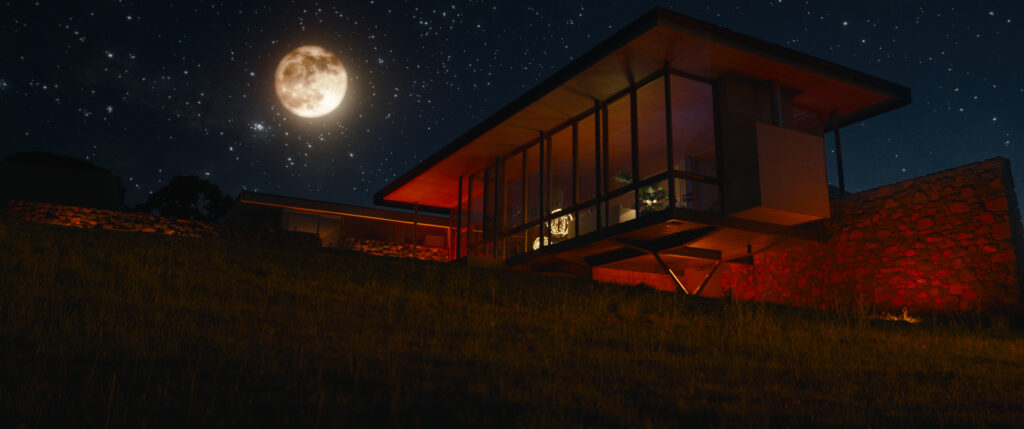
KS: Ultimately the director’s job, you’ve got to keep reminding people of the movie that you’re making. There are so many options for every one choice. So as long as you point people in the direction or give them a good reference, they can go off and do amazing things because they’re all so experienced and talented.
HB: Like Michael Price, our production designer, I think he put together Cecilia’s apartment in like a day or something crazy like that. Yeah. He was like, “What do you want me to do?” And we’re like, “Honestly, we don’t have time to think about this. Can you please just go ahead and spray your genius everywhere?” And he did. And we walked on set and we were like, “This looks like a proper multi-million-dollar production design.”
KS: We got very lucky with who we worked with.
Let’s talk about the practical effects here because a film can live or die on the quality of the practical effects. Sissy really leans into the gore and the severity of violence. Can you talk about the creation of those practical effects? Because my gosh, there were moments where I just wanted to pause and just stare at it and just enjoy the squeamishness of it all.
KS: I’m so chuffed that you’re the kind of guy that would pause an image of an exploding head. That’s exactly what I do. When I watch these films from the 80s or whenever they are, when there’s a great practical effect, I’m always that guy who rewinds it, goes frame by frame and tries to understand how they did it. I’ve always loved the craft of real hands-on filmmaking, figuring out how to make something look the right way in front of the camera with whatever you have on hand.
I love a good Marvel movie, like anybody does. But I definitely am getting a little fatigued by the amount of effects [in them]. And even though we’ve leant on the effects in many ways, they were usually just to amplify or smoothen the practical effects, or to do something that we didn’t have time for like lightning striking through the sky.
HB: Or like a bullet.
KS: Yeah. There was a lot of wonderful use of VFX. Our VFX coordinator Seth Larney did a lot of them by hand just himself, which is pretty remarkable. But you know, Larry with his practical effects – it was just as simple as saying, “Hey, we want to do an exploding head in this movie. But we’re coming at it from this perspective or from this angle.” And he would be like, “Yeah, great. Look, what really helps is if you shoot it this way and not that way, because then we can do this or then we can do that.” And it was the same thing with Seth and VFX.
The ability to have those people on hand and say, “Look, it says in the script here that this body falls off a cliff, right? How are we going to pull that off? Are we going to do that with a stuntman? Are we going to do that with a dummy? Are we going to rotoscope an actor or do like a 3d scan of an actor?” Which is what we ended up doing. We always start from how do we do this practically? And if you can’t do it practically, then you entertain how it can be done on the computer or how it can be done with a mix. What you end up with is a product of compromise of the original vision but not in a bad way, just tweaking things here or there. And what you end up with is a mix of practical and VFX things that are always a product of their time and schedule.
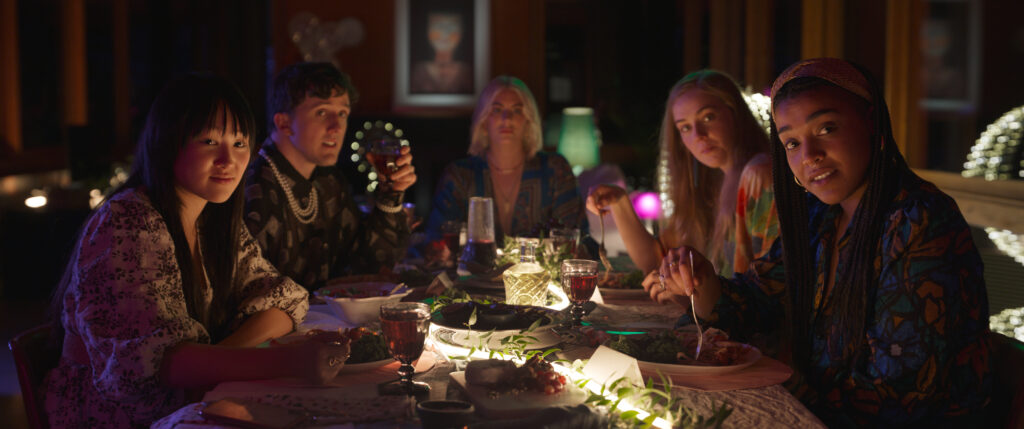
I think in our case, we probably got a lot more bang for our buck than we should have because of Larry and Seth. I mean, we got to go into the creature workshop every now and then and see how an actor’s face had turned into a mold or how they’d started to insert all the individual hairs. And we were like, “Geez, Larry, you’re individually feeding these strands of hair, and we’re just going to drive over this head tomorrow in like one take.” We can’t really take credit for any of that, because they’re the ones who did it.
HB: Larry and the boys at Scarecrew Studios are so talented.
The gore sings in your mind afterwards, amongst everything else. The comedy and the script and the performances are all brilliant. But I think this is the kind of film that I’ll be able to say to people who are into gore and that kind of stuff, “Hey, go and watch this because somebody’s head gets run over.” It’s such a weird thing to recommend somebody to go and see a movie, but it’s exciting.
KS: Thank you very much for that. Also, I think a lot of it is how much you are invested in those characters that get killed. If you just watched the clips by themselves on YouTube, I wonder if it has the same effect. This was kind of a byproduct of our last film which was just about this small group of friends that go on a road trip. We always said “Wow, we really get to know these people and you feel like you’re one of their friends. Imagine if everyone started getting killed off now in this movie in the second half.” And that kind of led us to “Why don’t we write that next time?”
And so I think for us, it always came from [a viewpoint of] we really want to love all these people, but not necessarily in a standard archetypal way. Like the group of friends in in all slasher movies, right? Some are better than others, like in Scream obviously – it’s wonderfully meta and they’re teaching you the rules about the genre. But normally, there’s the jock, there’s the cheerleader, there’s the nerd or whatever. So when they get killed off, you’re not necessarily that emotionally invested because you never really got to know them in the first place. They just feel these kinds of tropes in your head that you’ve seen before.
I think if you actually hang with the group and they’re people that you might not have seen that much of on screen or especially in that configuration or with those relationships. I guess they’re pretty modern in that sense.
HB: Not very likeable, though.
KS: Somewhat unlikable, which I guess helps it. It helps you like Cecilia more. But they have to at least feel real enough as people so that when they get killed, the actual kill scene feels like a bigger deal than just the practical effects because you’re invested.
HB: To circle back to your original question, I think the kills are really where lies that struggle for balance between horror and comedy, because these characters are not characters that you see get killed off all the time. It’s uncomfortable and you are approaching the line. We worked really hard on making sure that you didn’t like them but also that you were not comfortable with laughing when they when they died. Or laughing but being like, “Oh my god, am I a terrible person for wanting to see this person die?”
I wanted to ask about Aisha [Dee] and how you went about casting her and creating what is a very complicated and conflicted person.
HB: I was a big fan of Aisha on The Bold Type which is distributed through Stan. here in Australia. There’s this huge Australian fanbase apparently, that she wasn’t aware of. But I also remember her from The Saddle Club way back in the early 2000s, late 90s. I’ve just been following her and we reached out to her and she came back to us and said, I’d really like to you to consider casting me as Sissy. And we had one conversation with her where she said, “I am Cecilia, I am this person, I know her because I am her,” and we bonded over like similar childhood bullying experiences. It was just clear that she was the role. We were right to cast her because she elevated what we wrote, and that’s the dream as writers.
But then also as directors, she’s such a pro because of the amount of experience she’s had on set. She was able to nail that performance in under two takes because of how quickly we were moving. She makes us look really good as directors because it was really all her. I’m just a big fan of Aisha. I think she’s got a huge career ahead of her and we’re lucky that we grabbed her now.
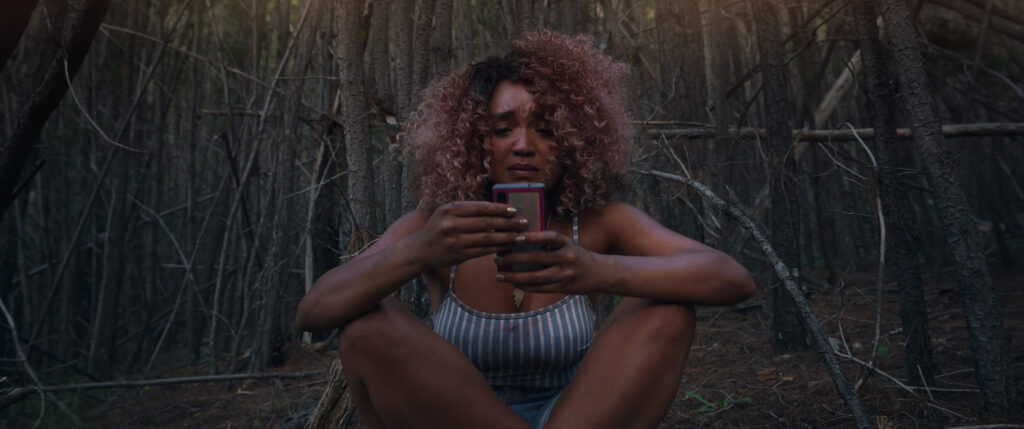
KS: You wonder what the film would have been if we had not found her. Because she just had such a specific take on that character. Even when she would have a more out there idea, we always just loved it. We were always like, “Yes, do that.” And it always made us laugh behind the monitor. You keep expecting maybe she’s going to be wrong on one of the calls, but she never was. As wanky as it sounds, it was like she was birthing the character in front of us. We had a lot of fun watching that and totally forgetting what we had written. There was the blueprint for each day, but there was this whole extra wonderful layer of unpredictability and fun bubble gum, but then also kind of hard to watch losing her mind insanity.
HB: In terms of that tone of horror and comedy but also seeing someone have a breakdown, Aisha really brought that intuitively as a performer and that’s what I mean about her elevating our material. You know, it could have been too much of a satire where that balance wouldn’t have worked. We were very lucky to have had her as the lead.
I want to talk about the song choice as well, Sister2Sister. How did you come up with that?
HB: Well S2S – when I was, I think, eight or nine, we’re heading towards the Sydney Olympics. It’s this huge cultural shift for Australia. And that song was huge at the time, alongside like Nikki Webster and that whole era of evil pop, Australian pop which was so funny. But my best friend Molly and I used to dance to that and choreograph routines to that for hours on end. So it was really important to me that that song – because it’s so twee in like an uncomfortable way, it just works.
It’s kind of like David Michod’s movie, The Rover. He uses that song – Keri [Hilson’s Pretty Girl Rock], right, and it’s also really twee. And I remember watching it at the time, thinking that really works because it’s very much in contrast to the tone of the movie. It’s got that same evil pop feeling. So yeah, I just wanted to make the audience squirm a little bit.
It gave me it gave me flashbacks of The Loved Ones with Not Pretty Enough.
HB: That was a reference.
KS: Yes, that definitely was one that we watched. Like our film is not about a prom. But there was such a wonderful 80s prom aesthetic to that horror film which I thought was awesome. We looked at that and said, “Well, what’s maybe a millennial version of that?” I still hold that right up there as one of the best horror comedies, if you can call it a comedy. It’s darkly comedic, but I love that kind of stuff.
I wet myself laughing with that film. It’s bleak and horrific and nasty. It’s wonderful.
One of the things I focused on last year was talking to people about Australian genre films. And one of the things that was talked about quite a bunch was the fact that we don’t really make many Australian horror films as such. I want to hear from you both about what it means to be Australian filmmakers and what it means to be Australian horror filmmakers, too.
KS: Well it’s funny because yes, if you look at the numbers, it seems that we don’t make a lot of genre films. Yet we’ve got so many of these classics that if you ask diehard horror fans anywhere around the world they know about. And I’m not just talking about recent things like The Babadook [but] going back to like Razorback or Wake in Fright which got re-released, one of only two films to play at Cannes twice. Wolf Creek, obviously.
Someone wrote about Sissy and said something like, “Man, Australians are really fucked up.” I got more out of that than probably anything I had kind of read or anyone had said about the film. Just to even scratch the surface of that rich history that we have of these really deliriously messed up horror films, like you said about The Loved Ones, that make you kind of want to vomit and laugh at the same time.
HB: Well, I think that’s all in response to our own fucked up nuanced history that we don’t sit very comfortably with. And so if we as filmmakers can kind of point at that in what we’re doing, that’s the goal, I guess.
KS: And I think we’re so far away, and we all grew up almost like feeling like we exist on our own little island, which we do. So if you want to shout across the seas, you’ve really got to shout. I think a lot of Australian filmmakers have really made some bold choices, whether it be the tone of the film or the music or the colour or all of it, the subject matter, how far they go with the gore, how far they go with the laughs in the same film, you know?
To me, I think being an Australian or being Australian horror genre of filmmakers – or at least as far as Sissy, it might not be all we ever do – but that means almost more to me than just saying Australian filmmakers. I think it’s very cool to be Australian filmmakers on the international scene.
But when you make genre films, you’re always kind of thinking niche, you’re always thinking about that wonderful wacky world no one else really looks at. Now there’s more of an appetite for it since comic book films went big, the whole kind of Revenge of The Nerds that we’re seeing in society which is amazing. But it also has taken away that kind of nicheness. And I don’t know, I just love that the most. My favourite section of every film festival is things like Freak Me Out which is what it’s called at Sydney [Film Festival] or Midnight. That is always my favourite section.
When we were at South by Southwest, to be playing in that section as an Australian horror but then also meeting all these other wonderful filmmakers that had their kind of wacky versions of their cultural horror or whatever that meant. That’s where I get the most enjoyment. I think it’s feeling that sense of an international kind of community for a niche thing. And being Australian, I’m proud of that. I’d rather be Australian, I think, than anything else. There’s wonderful films from everywhere, but I look at the stuff we’ve made and I like it the most.
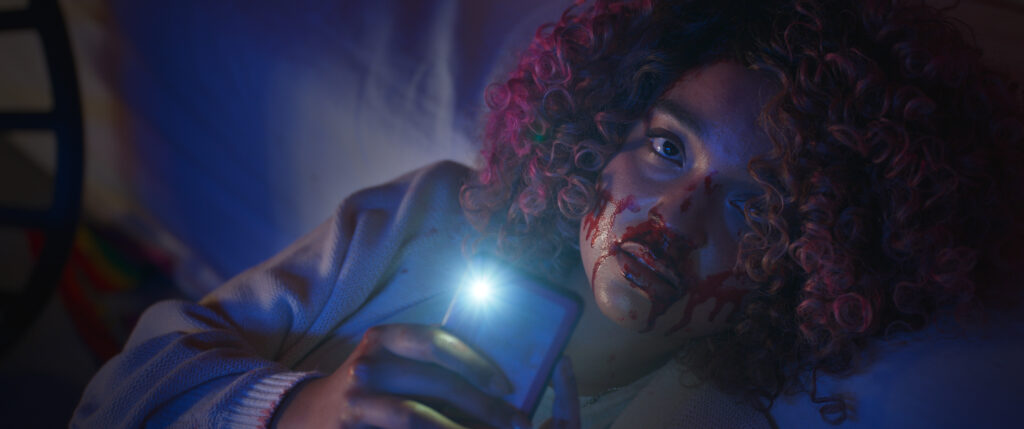
HB: I think the world does, too. I think the world loves Australian filmmakers, because we do make bonkers stuff.
KS: Like the Swedes make bonkers stuff. Like everyone makes fun stuff.
HB: Yeah, but like Baz Luhrmann. He’s one of our greatest if not the greatest export as a multifaceted artist. And his films are just –there’s no one like him. There’s so much camp, incredible magic.
KS: They’re delirious, yeah.
HB: I remember as a nine-year-old watching Moulin Rouge! for the first time and falling in love with Nicole Kidman, and then also being like, “Oh, I’d love to do something like this.” But I had no idea that I wanted to be the person behind the camera. So I think it’s just cool to be called an Australian filmmaker. Just to be called a filmmaker is cool.
KS: Just to make movies always feels like a blessing.
HB: They’re so hard to make.
KS: For us, it’s something that you touch wood for, you knock on wood for it. And then when people like yourself ask us about Australian horror films, that’s when you start to really enjoy that you’ve made the thing because you get to have these wonderful discussions and reflect on what inspired you and other people like yourself have an understanding of the genre space and all that too. It’s just wonderful.
You’re listing all the different festivals that Sissy is playing at, and of course it’s opening Revelation as well which is my [cities] festival.
HB: That’s you. Kane’s first film Echoes of War actually screened at Revelation I think in 2015. He couldn’t go at the time so we’re really excited to go to Perth and be in that audience and also so grateful to be the opening film.
KS: Yeah. That’s very cool. I was very excited to get into that festival so it’s nice five or six years later to finally be able to go and be a part of it.
I think Echoes Of War was actually one of the first films I ever did a review for.
HB: No way!
Yeah, I started way back in 2014 so I’ve been doing this for almost ten years.
KS: Oh wow.
Unfortunately the review doesn’t exist anymore. I was just trying to see if it was still up but no. It was great, I loved it back then.
KS: Well, thank you. I don’t know if I might have read it at the time. I don’t know if I joined the dots that that was you. We’re super excited for Revelation.
HB: I love Perth anyway. The light over there is unlike any light in the world. When the sun sets, there’s like this dusty pinkness that covers everything. It’s beautiful. I can’t wait.

